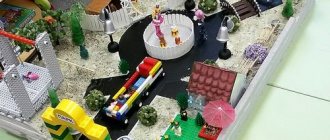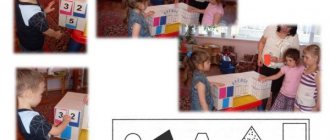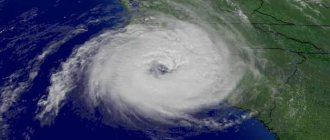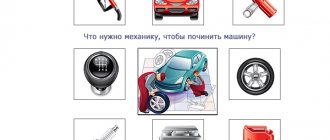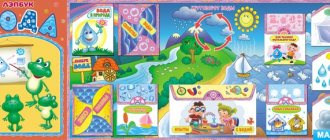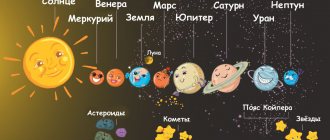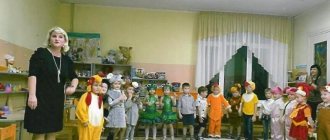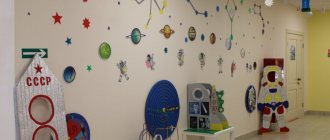Abstract of the NOD for the NGO "Cognitive Development" "Travel to the Native Village"
Is it good in your native land? (spread their arms to the sides) Okay! (thumbs up)
Motivation and goal setting
.
V.: Guys, I didn’t come to work at the kindergarten today alone, the girls Masha and Dasha came with me. Let's say hello to them. These are the granddaughters of my neighbor, an old grandmother. They came from the Tula region to visit their grandmother, but they were bored sitting at home, and their grandmother asked me to take a walk with the girls and introduce them to the village. But I, guys, have very little free time, and I decided to take them with me to work, maybe we can figure out together how to entertain Masha and Dasha.
Conversation:
— Guys, what can you offer? (Answers)
— How can we introduce them to our village? (Answers)
- How can we go on an excursion? (Answers)
The children suggest going on a trip by bus.
Main part.
V.: Guys, to travel by bus we need a driver and we need tickets. The driver will be the one who is the first to correctly say the name of the village in which we live, and what we, the residents, are called.
Q: To get tickets, you need to give your home address. Whoever names the street gets a ticket. At the same time, we will tell our guests about what streets there are in our village.
Word game with a ball “Name the street”
Children take turns unwinding a ball, on the threads of which tickets are glued (photos of the village). They give their home address, take a ticket and go to their seats.
Everyone sits down on chairs, the music “We are going, we are going, we are going” is playing in the background.
V.: Our village of Znamenskoye is our small Motherland, the place where we were born and live. During the excursion we will make stops at various interesting places in our village. Look ahead, I can already see a familiar building. Let's stop and see what it is.
On the easel is a photograph of the museum building.
V.: What is this? (Answers)
— Do you like going to the museum? (Answers)
V.: Yes, you guys are right, the museum has already become a favorite place for us, we often go there for various museum classes. The museum has many halls, but we will visit the Animal World exhibition. Do you know the forest animals of our region? I suggest playing the game “Name the extra animal.”
Didactic game “Name the extra animal”
There are pictures of animals on the easel; you need to name and remove the extra ones that do not live in our area, and explain your choice.
V.: And now I suggest you take a little walk, get some fresh air.
The children are walking, and on the projector screen the children see a photograph of the district park.
Q: Guys, pay attention to where we have come? (Answers)
Would you like to take a walk around the park, listen to the voices of the birds and tell Masha and Dasha what trees grow in our area?
Lesson summary on the topic: “The village in which we live”
Topic: Conversation “The village in which we live”
Tasks:
— To form students’ ideas about their native village, to introduce them to the sights of the village.
— Foster love for one’s land, a sense of kindness and love for the world around us, and develop a responsible attitude towards the environment.
— Develop cognitive activity, observation, memory, attention.
Progress of the lesson.
1. Organizational moment.
2. Communicate the topic and objectives of the lesson.
(music of the song “Our Land” sounds)
— Why do you think this song was played? (because today we will talk about our district, about the village in which we live.)
- What is our area like? How do people live and what do they do? What surrounds us? This is what we will talk about today.
3. Work on the topic of the lesson
The country in which we live.
— What is the name of our country? (Russia)
— Our state is called Russia, the Russian Federation.
Look at the map of Russia. Our country is huge. It stretches far from west to east and from north to south. In the far north there is snow both in winter and summer, but in the south snow is very rare. Our country is very beautiful.
Russia is a city with its own historical monuments, alleys, and groves. These are forests with their vegetation and amazing wildlife.
Look how many republics, territories, regions are part of our country.
- Name the main city, the capital of our Motherland. Show this city on the map.
The region in which we live.
— Russia is our big Motherland. But there is a place that every person remembers and loves. This is the region where he was born and lives. Here, every person has relatives and friends, places where the family likes to come on vacation.
— What is the name of the region in which we live?
— Each region has its own map. Look at the map of our republic.
- This is our republic, our little Motherland.
— What is our region rich in?
The place where I was born and grew up. It contains enormous attractive power. And even after leaving their native places for many years, a person remembers them with tenderness, warmth, and proudly talks about their beauty and their wealth.
The history of our region, our ancestors is an integral part of our life, our culture. As for our village, the date of foundation of the village in the clearing, which belonged to a certain Zubov, is not indicated in historical chronicles. There are several versions of the formation of a settlement on the banks of the Partsa. We'll talk about this a little later. But the names of the first inhabitants of Zubovaya Polyana are well known.
The history of the village and region and its past, present and future in people and their affairs.
Many who connected their lives with Z-Polyana are forever immortalized in monuments, books, and street names of the village. Great people do not disappear without a trace: the glory during their lifetime and the good deeds they accomplished inspire their descendants for many years.
Whatever the life of a people, there is always a place for song in it: affectionate and sincere, daring and sad, cheerful and perky, they accompanied a person from the cradle to the hour of death. And people have always revered arctic foxes, capable of shaking people to the core with their powerful and pure sound.
Numerous holidays, anniversaries and creative evenings are held in the village and region, in which the RDK takes part. These are the traditional holidays of the land of Zubovopolyanskaya “Aksha Kelu” and “Kazanskaya”. And in 2022 - the celebration of the 90th anniversary of the Z-Polyansky district and, of course, the 25th anniversary of the Polyane ensemble.
The creative team of the ensemble takes part in all folk art festivals of our republic and beyond.
The cleanliness and beauty of the city.
- Why do you think the streets of our village and gardens are dirty and unpleasant? Why is there trash under every bush? Who does this? Can reasonable people pollute the environment? How should you behave to keep your surroundings clean and beautiful?
4. Consolidation.
— What is the name of the state in which we live?
— What is the name of the area we live in?
— What is the name of the village where we live?
— What should you and I do to make our beloved village prosper?
(drawing of our village)
5. Summary of the lesson.
Our village is our pride and love, I hope that everything you have learned will serve as an impetus for a careful and caring attitude towards everything created, and in the future for personal participation in increasing its wealth and beauty. Maybe some of you in the future will also contribute to the development and prosperity of your native village.
